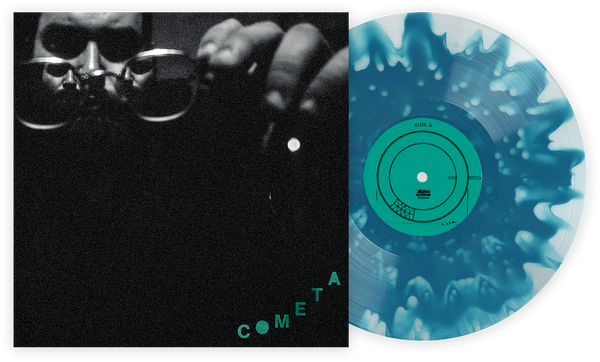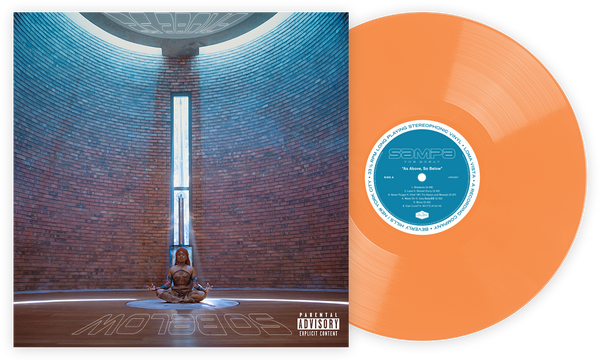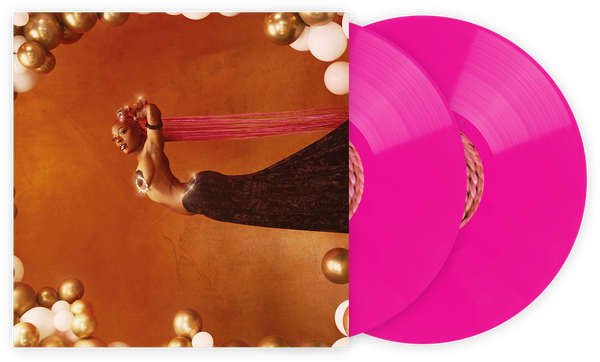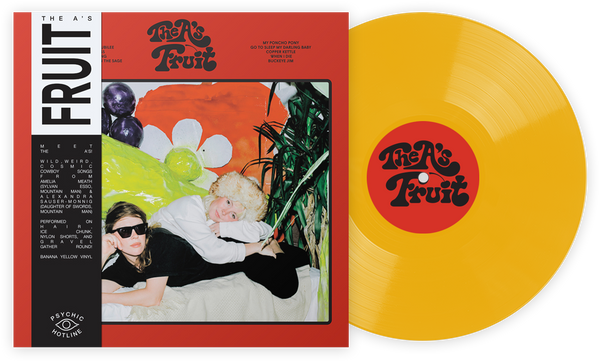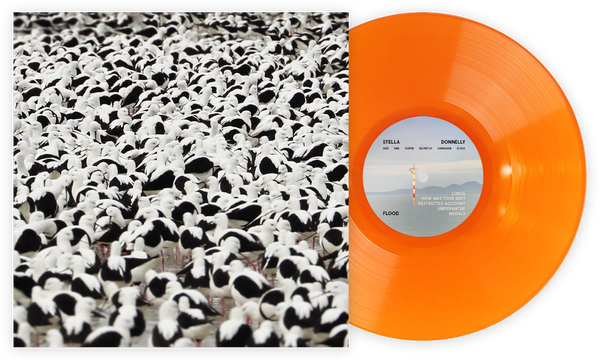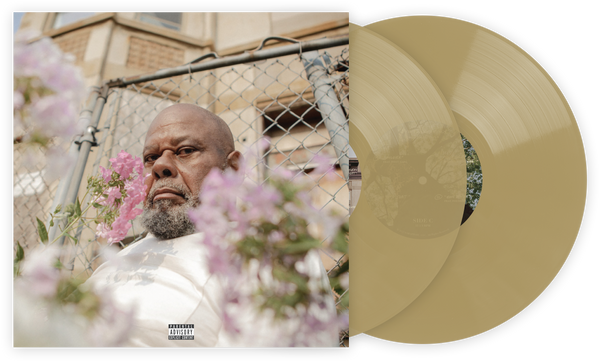Luxury isn’t the first word that comes to mind when listening to the tense post-punk of Wire, but that’s how veteran music writer Simon Reynolds describes the band in a 1987 Melody Maker review of their Ideal Copy LP. “Wire are pure luxury,” Reynolds writes, praising the band for their “immaculate grasp of the sculptural and architectural possibilities of rock.” He likens them to abstract art, and it’s an apt comparison. Slap Pink Flag or Chairs Missing on the turntable and they can give you the impression that the band is an Alexander Calder mobile: a skeletal thing that hangs in the air, its every curve conveying a sense of motion even when it’s still.
For over 40 years, Wire has been one of the most tireless and unpredictable outfits in rock music. Restless sound architects, they throw away the blueprint with each new record and draft a new one. Few groups can match them when it comes to being unsentimental about their own work: even when Wire revisits older material (which they’ve done many times throughout their long career), it’s never just to “play the hits.” When they exhume their old bones, it’s so they can drape new flesh on them and rearrange them into strange new shapes.
While the quartet of Colin Newman, Bruce Gilbert, Graham Lewis and Robert Gotobed are best known for their opening trilogy of classic post-punk albums (Pink Flag, Chairs Missing and 154, all three of which are being reissued this month on vinyl), they’ve done a lot of fantastic work since then. While so many of their contemporaries have cashed in their chips or got lost in anniversary album purgatory, Wire keep pushing themselves and trying new things.
If you’re looking to enter the world of Wire, here’s a primer on their most essential records to get you started.
Chairs Missing (1978)
Pink Flag is the most famous Wire record but Chairs Missing is the band’s defining work. Nothing else in their discography better conveys the creative restlessness that makes the band worthwhile. Chairs Missing is the sound of a band hopping from one train of thought to another. There are songs on Chairs that touch on the straight-ahead punk of Flag, but they quickly fall apart and transform into something else. Listen to “Sand In My Joints”: the sudden break into noise in the halfway mark, where the song warps and gets pulled apart and reformed like taffy, is the moment where the “post” drops down and affixes itself to their “punk” status.
Chairs Missing is also an important touchstone because it’s the first time the band indulges in the disquieting atmospherics that crop up throughout so much of their work. On “I Am The Fly,” “Mercy,” and “Heartbeat,” Wire conjure a creeping mood — paranoid and uneasy. They sing songs like they’re holding their breath, waiting for something to spring out of the corner of their eyes. Wire aren’t a group that sings about drugs; they’re a group that sounds like they need to be on drugs. Anything that puts a damper on the anxiety that screams louder than their stopstart guitars.
But for all the moodiness on Chairs Missing, it’s also around this time that Wire released one of their best tunes: the gorgeous “Outdoor Miner,” a song that glides effortlessly through speakers while the rest of their work shoves and tumbles its way out.
Snakedrill EP (1986)/The Ideal Copy (1987)
Wire took a hiatus from 1980-1985. When they came back, it was in a radical new form. Taking the electronic and ambient textures they played with on 154 to their logical endpoint, the band reinvented themselves as a chilly industrial pop band. They now had more in common with Cabaret Voltaire than with the class of ’77 punks. The band was so adamant about not revisiting their past work that they took a Wire cover band, The Ex-Lion Tamers, on tour with them as their opening act. Fans who wanted to hear the “old” Wire would have to hear somebody else do it.
While Snakedrill and The Ideal Copy were released separately, they often got packaged together. Both records feel like one piece, highlighting the band’s cold deconstruction of New Wave and industrial music. They took familiar bands like New Order and hammered their style into something abstract and spiky. Ideal Copy songs like “Madman’s Honey” and “Ahead” are ’80s radio hits that have been left in a hot car for too long. Snakedrill’s “Drill,” on the other hand, feels like exquisite torture: the sparse percussion taps relentlessly like a dripping faucet. You keep expecting “Drill” to build up to an explosion that never comes: the dam may swell, but it doesn’t burst.
The First Letter (1991)
In retrospect, it isn’t a surprise that Wire would pivot to electronic music in the early ’90s. As fans of krautrock and Brian Eno, they’ve always been open to integrating electronics in their music. The band’s love of reworking and recontextualizing their older work shows an affinity for electronic music’s love of the remix.
The band went all-in on dance music for 1990’s Manscape, but it’s on The First Letter that their transformation into an electronic outfit is complete. Drummer Gotobed quit the band before the 1991 record came out, feeling there was no place for him in the band as drum machines and loops became more prevalent in the work. To mark his departure, Wire changed their name to Wir. While so many British bands of the era were singing about taking E, the only e Wire was taking was off their name.
The First Letter is a hypnotic record, treating techno like a block of ice that the band chips away at with detached vocals and slow, sinewy beats. The album’s highlight is the “So And Slow It Grows” — it’s when the ice melts and a feeling of vibrancy washes over the track.
Wire would also release The Drill around this time, a record that takes the “dugga” rhythm from Snakedrill EP cut “Drill” and reworks it over the course of the whole album. Leave it to Wire to devote an entire record to different versions of one song. It’s the musical equivalent of Raymond Queneau’s Exercises in Style, where the author rewrote the same story 99 times.
Send (2003)/Object 47 (2008)
The e came back in the new millennium as Gotobed returned to the band. Retiring the techno explorations of Wir, Wire got back in touch with the punk fury of their youth for 2002’s Read & Burn EP and the Send LP. Although the band was digging around in their toolbox to dust off their buzzsaw guitars and tightly wound vocals, this return to rocking wasn’t an empty nostalgia exercise. They applied their mastery of atmospherics and electronic textures to create a cybernetic sequel to Pink Flag, one that’s steeped in a coiled and claustrophobic mood. On songs like “Spent” and “Comet,” Wire attack their instruments like a pack of animals trying to claw their way out of a cage.
Object 47 marked a significant departure for the band: It was their first album without founding guitarist Bruce Gilbert. It’s also a 180 from Send, trading in the dense and trapped vibe of that record for a more expansive and open sound. “Perspex Sound” marries underwater vocals with Chameleons-esque guitar work while “One Of Us” is perhaps the catchiest song the band has recorded since “Outdoor Miner.” “One of us will live to rue the day we met each other,” Newman sings as the band gives the song the triumphant backing it deserves.
Nocturnal Koreans (2016)/Silver/Lead (2017)
How many active bands can say they’ve been a going concern for 40 years and still be producing work that’s as artistically vital as their early work? Wire has few peers in this respect. The elder statesmen of post-punk celebrated their 40th anniversary by eschewing the traditional ruby gift for an even better present: a pair of killer records. Nocturnal Koreans finds the band throwing some unorthodox instruments like trumpets and lap-steel guitars into the mix. The record’s name fits the mode: This is a nighttime record, cool and relaxed and a little eerie. But for all the experimentation and somber moods Wire explores on Koreans, it’s also one of their most straightforward records in years: The uncluttered production gives plenty of room for their signature motorik rhythms and nervy guitars to dance their pas de deux.
The more compressed sounding Silver/Lead sees the band embrace their inner balladeers on songs like “An Alibi” and “Sonic Lens.” Wire aren’t a band that can be described as “gentle”: their music has too many sharp corners to ever make you feel comfortable wrapping yourself up in it. But there are songs on Silver/Lead that come close to being downright soothing. And they also get to indulge in a rare bit of swagger on “Diamonds in Cups,” with a guitar riff that sounds like it’s being played by a glam rocker with rigor mortis.
Where Wire goes from here is a mystery. Like Heraclitus’s river, the stream of inspiration they draw from is constantly in flux. While so many older rockers are frozen in time, endlessly replaying their hits to stay relevant, Wire keeps evolving. There is no comfort zone for them: only the great unknown, waiting for them to lay their claim by planting their pink flag.
Ashley Naftule is a writer, theater artist, & karaoke aficionado from Phoenix, AZ. He's been published in Vice, Phoenix New Times, The Hard Times, and Under The Radar.
Related Articles
Join the Club!
Join Now, Starting at $44Exclusive 15% Off for Teachers, Students, Military members, Healthcare professionals & First Responders - Get Verified!
